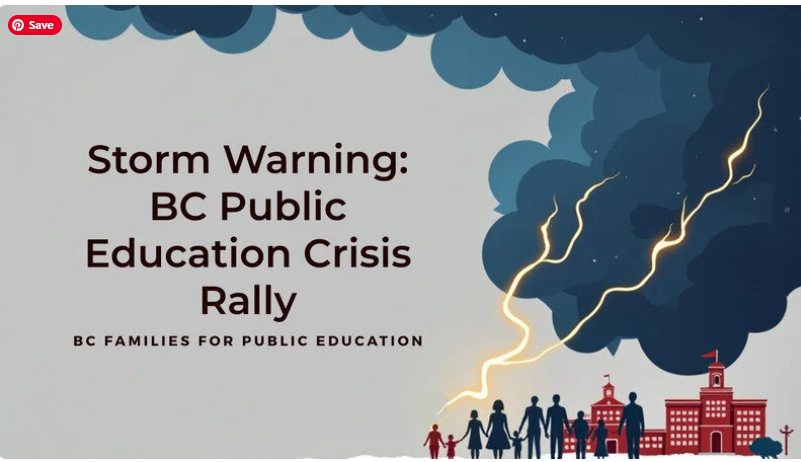
(ID: text: Storm Warning: BC Public Education Crisis Rally BC Families for Public Education. Picture of dark clouds over a school building with the outline of children and adults holding hands in front of the school. Lighting coming from the clouds down to the people)
Sign the Petition
News Articles
Surrey students plan march to push for B.C. school funding
Students rally against closure of White Rock learning centre
Kamloops-Thompson DPAC holding rally to push for more school district funding
Surrey parents and students rally for education funding
Students, parents protest Surrey school district’s band class cuts
Students rally to save South Surrey White Rock Learning Centre – You Tube
Vancouver School Board trustee faces backlash after post referring to parents concerns as ‘spam’
The government is under budget constraints?? Doesn’t add up.
“According to that 2021 data, BC allocates just 3 percent of its GPP to K-12 education, while Manitoba allocates 4.9 percent, Nova Scotia 4.4 percent, Saskatchewan and Prince Edward Island 4.2 percent, Quebec 4.1 percent, New Brunswick 4 percent, Ontario 3.8 percent and Alberta 3.3 percent. This smaller percentage means BC school boards have less funding available for student support and to provide up-to-date, adequate and safe school buildings.”
Our province is the LOWEST.
How are other provinces able to fund schools more than BC? PEI is at 4. 2% and BC is just 3%.
Explain that!
The kids who are going to feel the effects of the budget constraints the most are the most vulnerable kids.
I do not understand how the people in government, who are making these budget decisions, sleep at night.
Please sign the petition! A HUGE thank you to the organizers. Let’s spread this far and wide!
Parents are not going to sit back and tolerate this.
We are voters!!
Well, a message to the other government parties. You want to kick these people out? Make funding public schools your election commitment. Be nervous NDP! Want to keep your seats? FUND SCHOOLS!!
